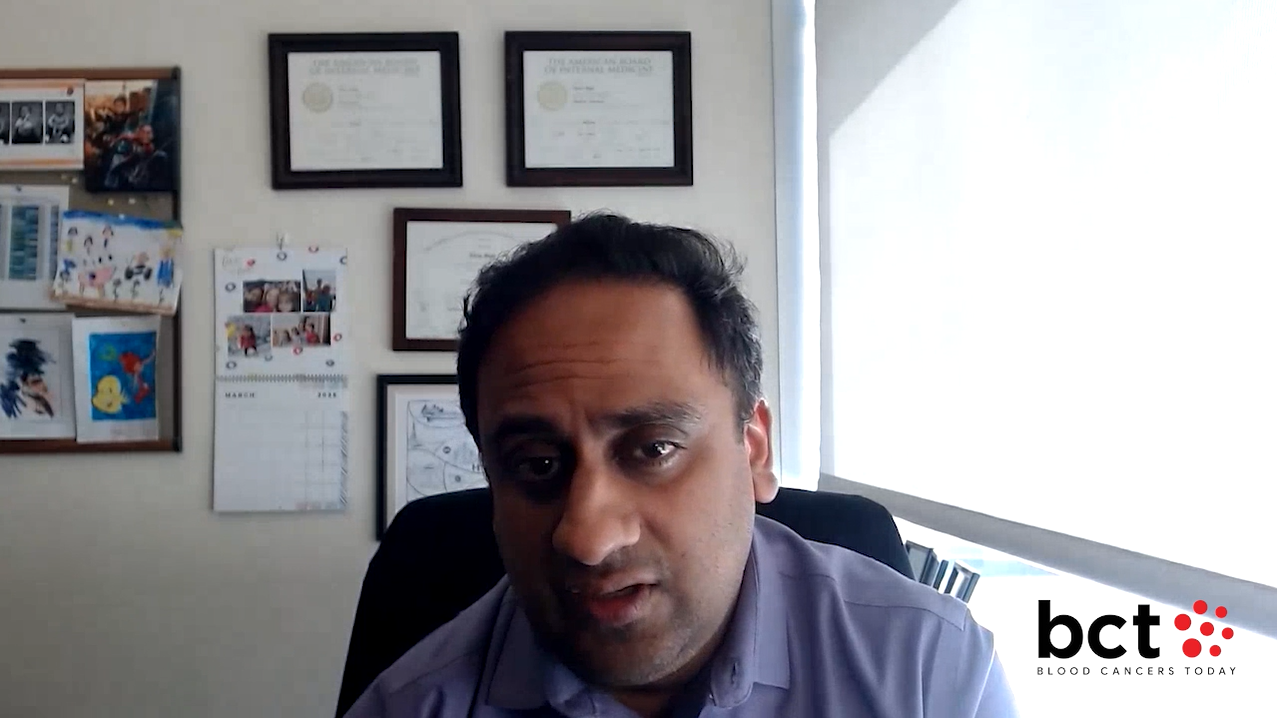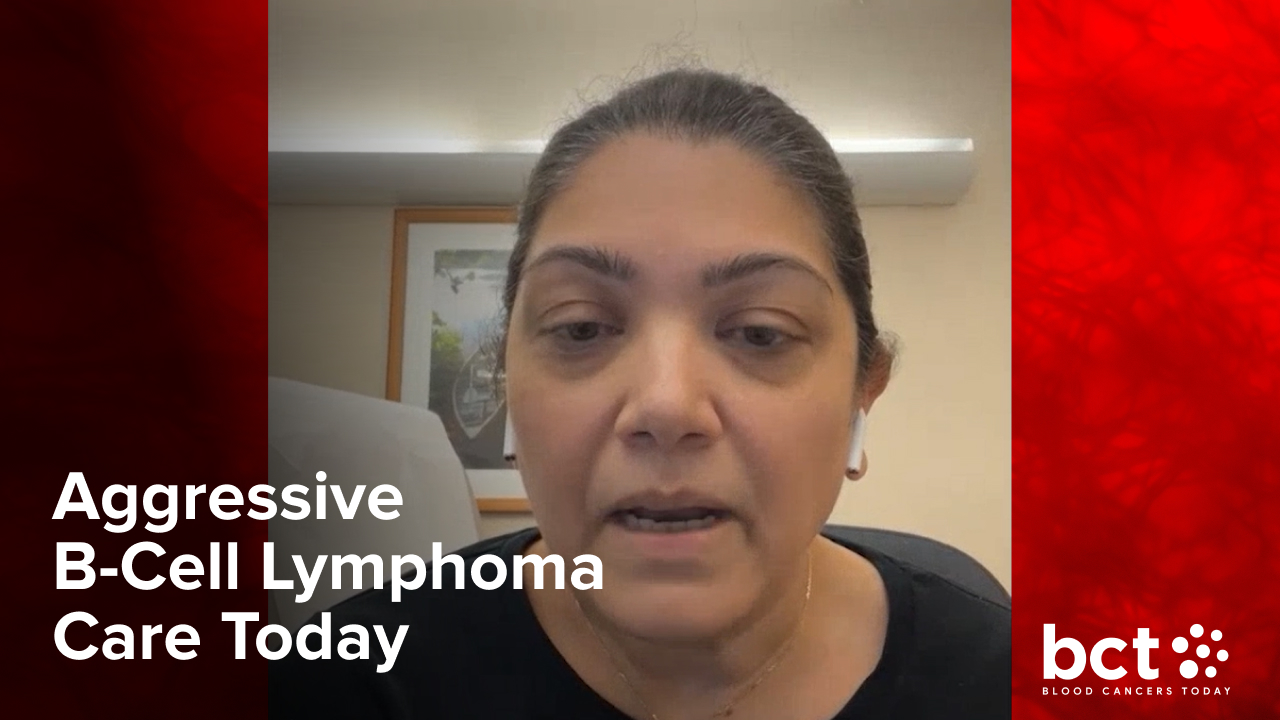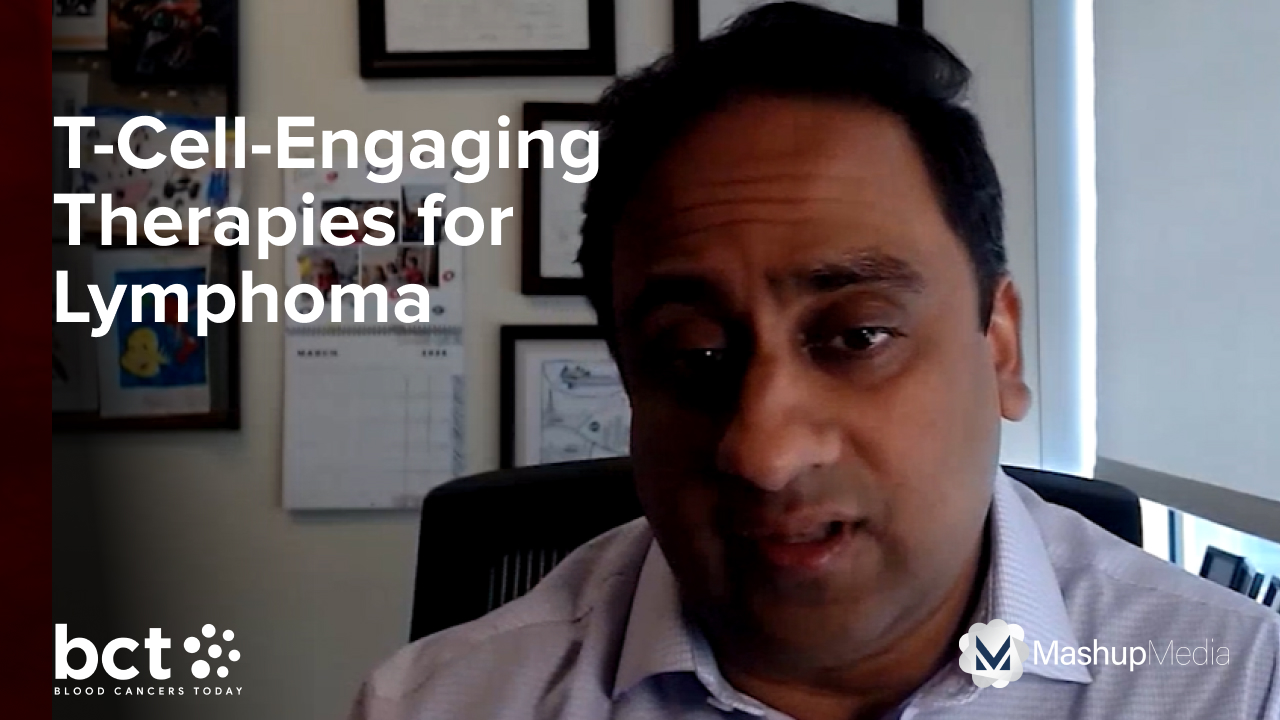Toxicity Management: CAR-Ts Versus Bispecific T-Cell Engagers
By Sagar Lonial, MD, FACP, Noopur Raje, MD, Krina Patel, MD, MSc - Last Updated: October 15, 2023A roundtable discussion, moderated by Sagar Lonial, MD, FACP, Blood Cancers Today Editor-in-Chief, of the Winship Cancer Institute at Emory University School of Medicine, focused on the latest updates in CAR T-cell therapy for multiple myeloma. Dr. Lonial was joined by Noopur Raje, MD, and Krina Patel, MD, MSc.
In the next segment of the roundtable series, the panel discusses treatment-related side effects such as CRS, ICANS, and more, and how to effectively manage these toxicities in the real world.
Watch the next segment in this series.
—
Dr. Lonial: Let’s talk a little bit about toxicity management, because I think in my mind there are two phases of it, and then compare and contrast that a little bit with T-cell engagers. There’s the short term, the first month or two, where I think we’re looking for cytopenias and other common complications, not just of chemotherapy, but of CRS [cytokine release syndrome], for instance. Then there’s the longer-term complications. How do you all think that through?
Dr. Raje: I think for the acute toxicities; easy, right? They’re in the hospital. With the CAR [chimeric antigen receptor] T cells, we are hospitalizing everybody right now. We are going to do our first cilta-cel (ciltacabtagene autoleucel) outpatient because the timing of toxicity is important here and they tend to get CRS a little bit later. With ide-cel (idecabtagene vicleucel), you get CRS quite early on.
I think over the last five, six years now, we are pretty good at managing CRS. There was that nervousness around using steroids, tocilizumab, but most of the data shows the sooner you manage CRS and make it so that it doesn’t progress to things like HLH [hemophagocytic lymphohistiocytosis] and ICANS [Immune effector cell-associated neurotoxicity syndrome], the better it is for the long-term outcome of these patients. Short-term use of steroids such as tocilizumab is really not going to impact the function of the CAR T cells. That’s the CRS part.
Things like ICANS, if you look at the data for both ide-cel and cilta-cel, the incidence of both CRS and ICANS, most of it is grade 1 and 2. There’s very little, if any, grade 3 and 4. I think it’s important to treat early, treat appropriately, and not be afraid of these toxicities. If you end up getting things like HLH and ICANS, which is progressing, those are the ones which can translate into some of the longer-term neurotoxicity issues that we’ve seen with some of these cell products. That’s the immediate.
Long-term, things like cytopenias, infections, again, I think we have to make a distinction between CARs and bispecifics. With CARs, again, that is sort of something which is more short-term as opposed to very long-term.
Dr. Patel: Yeah, and I think the other big one for CAR-T specifically long-term is the delayed neurotoxicity. Again, as Noopur said, we know that if you treat ICANS and CRS aggressively, in the first two weeks, those patients are a lot less likely to have that. But this is where I usually send my patients back home after the 30 days. I always send a letter stating, “This is what happened during these 30 days. Now look out for these things.” We’ll tell our caregivers as well, like, “Monitor handwriting. If you see something change or you see something just not right, call us.” Especially with movement disorders or neuropathy. Thankfully it doesn’t happen as much, but we still see it in the real world.
I think infection wise, I tell everybody, “If you have a fever, you talk to your doctor, you call us. Don’t say it’s just the cold.” Especially in the world of COVID-19, because where our highest mortality has been in the real world is actually infection, including COVID-19, in the first six months. First three to six months is really where vaccinations, things like that probably don’t work as well. Afterwards they do great. But if they get COVID-19, we got to really monitor them closely.
Things like CMV, etc., again in the first three to six months, if they have pneumonia, I’m checking for all of those things, PJP [Pneumocystis jirovecii pneumonia], which I think is a little different with the bispecifics. With continuous dosing, I’m looking for that all the time if they’re on it. There’s not really a period where you get to say, “Okay, probably this is not anything now.”
Dr. Lonial: Yeah, certainly in the way we’re dosing them on the trials, but I think all of us have a push to try and get less-intensive dosing to see how that does.
Somebody in the post-day 30 situation develops either a movement disorder or Bell’s palsy or something along those lines. How do you guys suggest that the local doc manages that, or do you bring them in? How do you work that out?
Dr. Patel: Yeah, so I guess we would do both. If it’s Bell’s palsy or facial palsy, we do high-dose steroids and then have them talk to our neurologist at least. We can do virtual medicine too now sometimes.
Usually, high-dose steroids is what works. Not everybody resolves, so that is something we talk to our patients about upfront now, but it usually improves, at least in overtime; it can resolve movement disorders. I tell them to come back to us and have our neurologist do everything they can—IVIG [intravenous immunoglobulin], steroids, potentially even killing any … if it’s early, if we see T cells, like actual CARs, doing anything we can to kill them to see if that will help. I think you guys have that paper that you can talk about.
Dr. Raje: We are seeing more and more of these weird neurotoxicities, which were not that well appreciated when we were using these on clinical trial. That may just be the nature of patients that we are taking on, right? Once the drugs are FDA-approved, the sickest of sick end up getting these treatments. With neurotoxicity, I am extremely careful. I have them come back to us. We are seeing weird nerve palsies, Bell’s palsies. We use high-dose steroids, but we’ve actually given [cyclophosphamide] as well. It’s a research test, but we are able to look for their CARs in their peripheral blood, also in their bone marrow. If we see that the percentage of lymphocytosis is mostly all CARs and it’s not going down with steroids, I’ve actually given [cyclophosphamide]. That was reported in the Blood paper, I think, and that patient did get better. I recently gave [cyclophosphamide] to another patient. I’m hoping she gets better. We shall see.
Dr. Lonial: Interesting. I mean, things again that we don’t typically see in the trials. Maybe it’s just an n, right? Those trials were relatively small, but certainly worth talking a little bit about.






 © 2025 Mashup Media, LLC, a Formedics Property. All Rights Reserved.
© 2025 Mashup Media, LLC, a Formedics Property. All Rights Reserved.